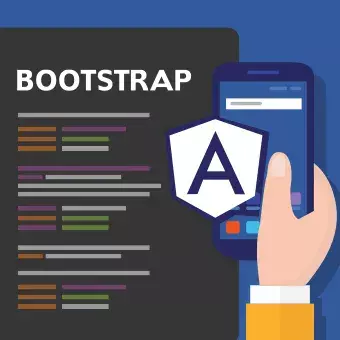A common misconception
There’s a misconception that guides the decision-making of many business owners: the myth that the initial sticker price on a web platform is all that matters. A low initial cost might appear to represent unparalleled value, but, as in many aspects of life, when something seems too good to be true, it often is.
Everyone loves a bargain, especially in business. However, when it comes to selecting a web platform, it’s important to keep in mind that the journey doesn’t end once you’ve paid that first invoice.
In a very real sense, that’s just the beginning.
Looking for a Web Agency?
Introducing TCO (Total Cost of Ownership)
This is where the concept of Total Cost of Ownership (TCO) comes in. The TCO is a comprehensive evaluation of the long-term costs associated with a product or service, in this case, the implementation of your digital, using your chosen web platform.
Choosing a web platform based solely on its initial cost can lead to unforeseen expenses later on, but by embracing the concept of TCO, businesses can make better decisions, and steer clear of surprises down the road. In our view it’s essential that business owners consider the Total Cost of Ownership (TCO) from the outset.
Unpacking the TCO
The value of Total Cost of Ownership as a concept is that it forces us to dig beneath the surface, revealing costs that might not otherwise be evident.
Let’s take a closer look at the integral components that make up TCO:
Maintenance: The long-term commitment
Web platforms aren’t set-and-forget solutions. As time passes, they require updates, bug fixes, and occasional overhauls to remain functional and relevant. This isn’t just about keeping up with industry standards; it’s about ensuring that the platform remains secure and efficient.
- Software Updates: Just like your smartphone or laptop, your web platform needs periodic updates. While some updates, like minor bug fixes, might be free, others, such as major version releases or updates that introduce significant new features or functionalities, can require the support of a web agency, and hence come at a cost.
- Compatibility Checks: As other technologies and tools evolve, it’s important to ensure that your web platform remains compatible with them. This could relate to plugins, third-party integrations, or even the browsers through which users access your site.
- Performance Optimisation: Over time, you might notice your website slowing down or not performing as efficiently as it once did. Regular check-ups and performance tuning can ensure that it continues to deliver the best possible user experience. Depending on the platform’s architecture, these tweaks might involve additional expense.
- Unexpected Issues: No matter how robust a platform is, unforeseen issues can arise. Whether it’s a sudden glitch, an incompatibility with a new browser update, or a broken feature, addressing these unexpected hitches often requires time, expertise, and yes, money.
Scalability: The cost of expansion
The idea of scalability is the foundation of many forward-thinking business strategies. As your business grows and expands, your digital assets need to keep pace.
But what does scalability really mean in the context of web platforms, and why is it so crucial?
- Traffic Handling: One of the most tangible indicators of a business’s growth is an increase in web traffic. A platform that isn’t scalable might struggle under the weight of increased visitors, leading to slow loading times or even crashes. Upgrading hosting or migrating to a more robust server setup can incur significant costs.
- Feature Expansion: As a business develops, it often needs to offer more features or services online. Maybe it’s a new booking system, an integrated e-commerce section, or advanced customer support features. Adding these to a non-scalable platform can be challenging and expensive.
- Data Management: As businesses grow, so does the amount of data they handle. Customer information, transaction records, user behaviour analytics – the list goes on. A scalable platform will efficiently manage this data influx without performance dips.
Security: Protecting data and assets
The importance of web platform security is rarely questioned, however the financial consequences of a potential security breach are often underestimated:
- Data Breaches: One of the most feared scenarios for any business owner is the theft of sensitive data. Whether it’s customer details, financial records, or proprietary information, a data breach can lead to fines, legal issues, and a loss of trust from your customers.
- Outdated Software: Cybercriminals are always on the lookout for vulnerabilities in outdated software. Regular updates and patches, while they come at a cost, ensure that known weaknesses are addressed, reducing the risk of exploitation.
- Third-party Integrations: Every external plugin or tool integrated into your platform is a potential security loophole. Ensuring these integrations adhere to security standards can involve additional vetting and, sometimes, premium versions with enhanced security features.
Why Most TCO Calculations Fall Short
Why is it that so many TCO calculations miss the mark?
Let’s explore some common oversights:
Overemphasis on Initial Costs
The motto of this article bears repeating: it’s easy to get hung up on the upfront expenses. Focusing too narrowly on initial costs can overshadow recurring expenses that, over time, may outstrip the initial outlay.
What can you do?
⇒ Budget for both the immediate costs and projected ongoing expenses over the platform’s lifespan.
⇒ Evaluate platforms based on long-term value, considering factors like scalability, flexibility, and support.
Ignoring Indirect Costs
These are the sneaky ones. Costs like training your team to use a new platform, or the loss of productivity during a transition period, might not appear in a quote but can add up. Indirect costs can sometimes rival direct expenses in their impact on the TCO.
What can you do?
⇒ Factor in the cost of team training and dips in productivity during the learning phase.
⇒ Assess related activities, like data migration or integration tasks, which might not be immediately evident.
Forgetting Future Upgrades
The digital world doesn’t stand still. Platforms evolve, and with that evolution comes the need (and cost) for upgrades. Not accounting for these inevitable expenses can result in a skewed TCO projection.
What can you do?
⇒ Create a separate budget allocation for anticipated future upgrades, both minor and major.
⇒ Evaluate platforms based on update history, upcoming changes and associated costs.
Underestimating Support Costs
Even the best platforms encounter issues or require tweaks. Whether it’s technical support, custom development, or regular maintenance, these services aren’t always cheap. Businesses that don’t factor these in can find themselves blindsided by unexpected bills.
What can you do?
⇒ Consider investing in support packages or retainer services to buffer against unforeseen technical issues.
⇒ Schedule routine platform check-ups to prevent larger, costlier issues down the line.
Conclusion: Seeing Beyond the Price Tag
The concept of TCO should provide a lens through which you should view every important choice in your web development journey. Here are the primary arenas where this mindset is indispensable:
Defining Your Needs and Requirements
Before even looking at solutions, it’s essential to map out what you need both now and in the foreseeable future to ensure you don’t find yourself outgrowing your digital infrastructure prematurely or facing unexpected costs down the line.
Choice of Platform
With countless platforms available, it’s tempting to opt for the most affordable or the most popular. However, considering the TCO here means thinking about scalability, support, and the future of that platform.
Choice of Agency
Choosing a web agency is about finding a collaborative partner, and it’s a decision that reverberates through every subsequent choice you’ll make. Their approach, understanding, and transparency can profoundly shape the TCO of your project.
Make sure you find an agency that:
- … thinks beyond the immediate project and considers how your digital platform will evolve.
- … takes the time to fully understand your needs, requirements and your business model.
- … communicates Proactively, and is willing and able to offer insights, advice and guidance.
In conclusion, the initial price tag is only part of the story. To navigate the world of web development effectively, one must adopt a TCO-centric approach. This mindset not only safeguards against hidden costs but also ensures that every decision made is strategic, future-proof, and aligned with overarching business goals.



